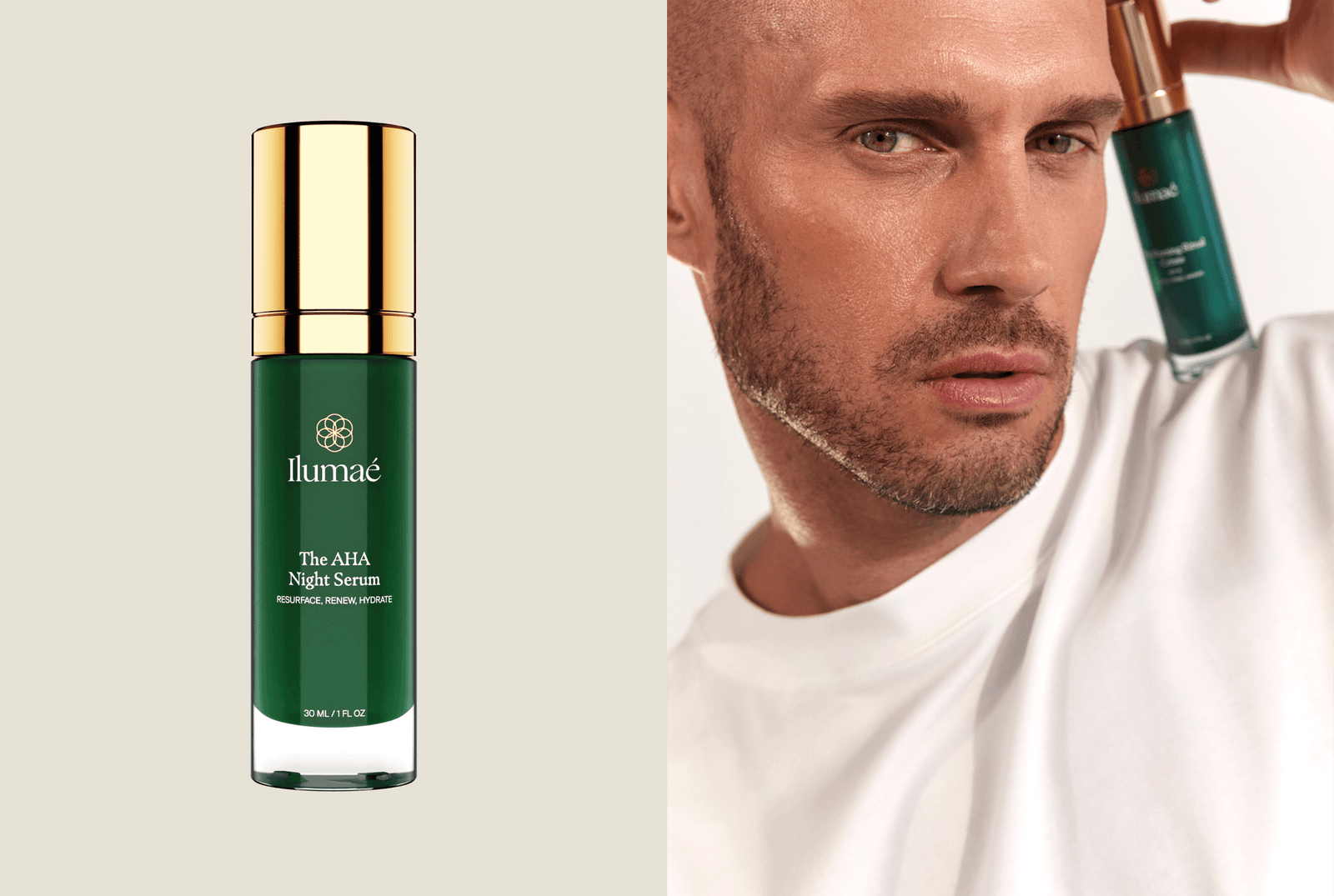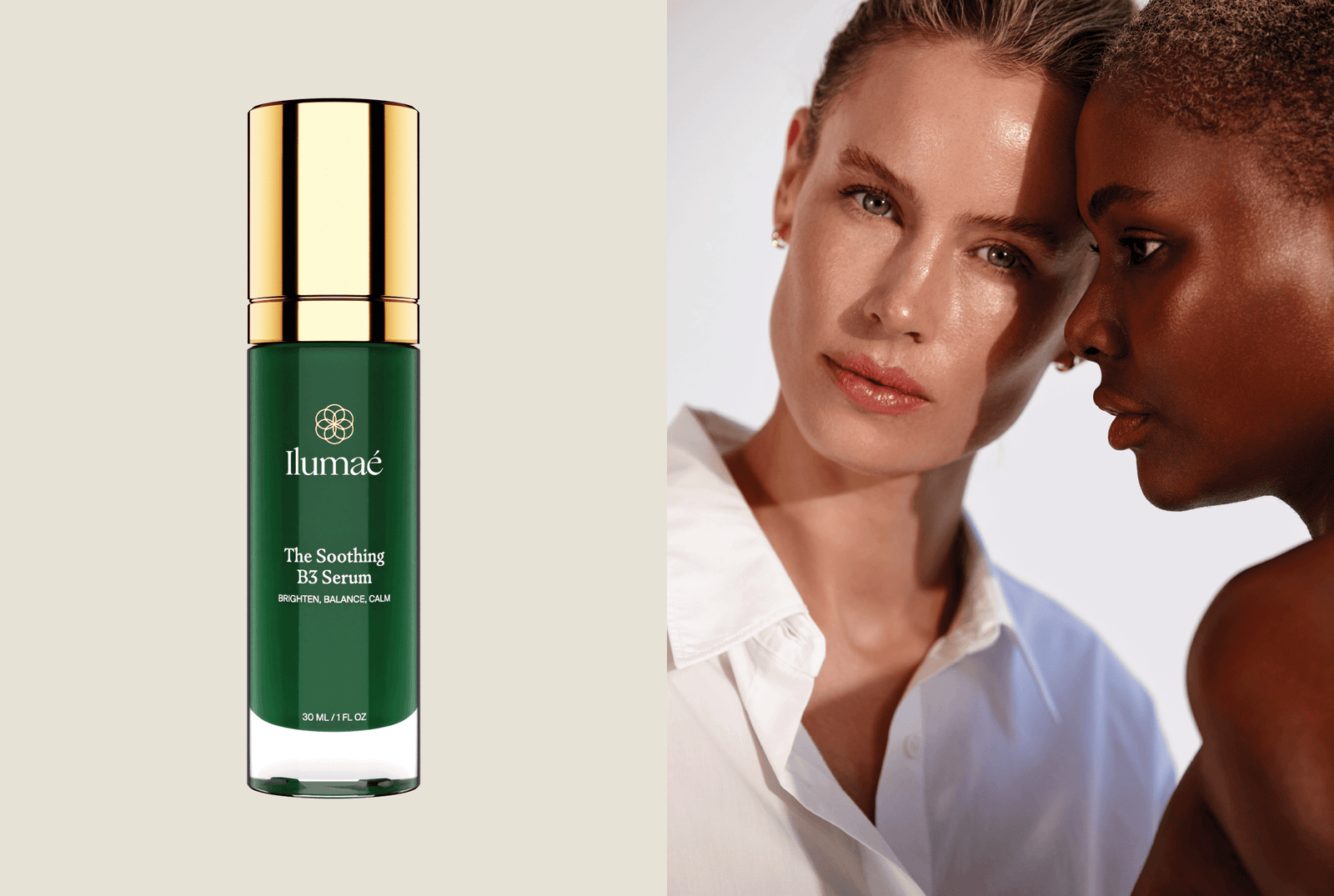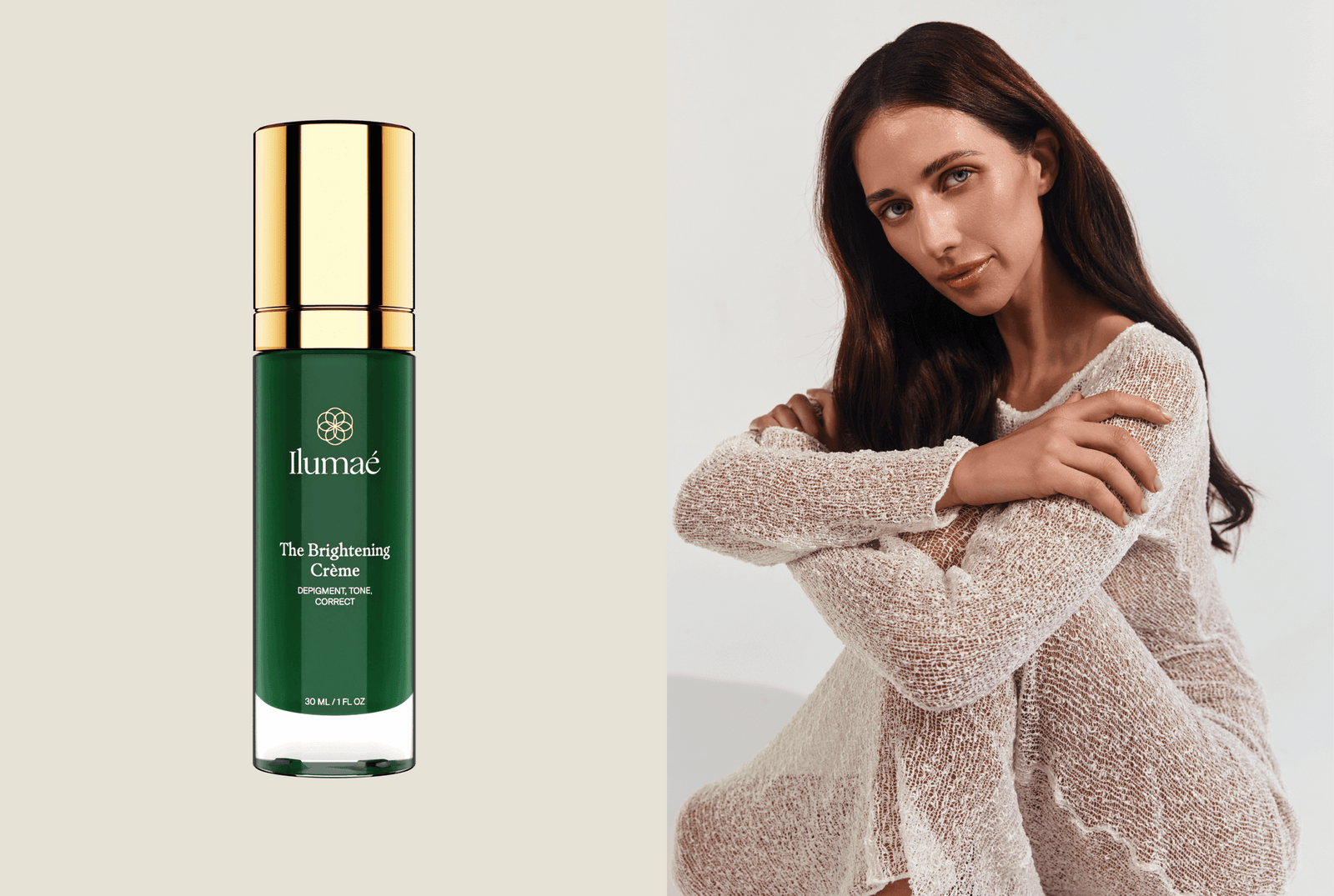Introducing 4-n-butylresorcinol
Say farewell to dark spots and discoloration with the power of 4-n-butylresorcinol (4NB) (1). This potent tyrosinase inhibitor is clinically proven to erase dark spots, resulting in a clearer, more even skin tone (1).
What is 4-n-butylresorcinol and how does it work?
Derived from the Resorcinol molecule family (1), 4NB contains isomeric benzenediols (1) that act as inhibitors for tyrosinase, a crucial enzyme in melanin production (2).
4 N Butylresorcinol in skincare products effectively combatis dark spots, age spots, and uneven skin tone (1).
Thanks to its exceptional pigment correction and brightening abilities, 4NB plays a pivotal role in Ilumae’s Brightening Crème.
How does it achieve these effects?
Tyrosinase regulates melanin production in melanocytes – the skin cells responsible for generating melanin. However, when these cells become overly active, it can lead to hyperpigmentation (3).
By curbing excessive melanin production, the application of 4NB efficiently reduces dark spots, unveiling a more radiant and uniform skin tone (3).
What are the benefits of 4-n-butylresorcinol in skincare products?
Regular application of 4NB leads to visibly brighter skin and a noticeable reduction in dark spots. But don’t just take our word for it. Two clinical trials highlighted that within a mere eight weeks, 4NB substantially diminished the appearance of age spots. Impressively, after 16 weeks, signs of hyperpigmentation were entirely eradicated.
In another rigorous study employing a randomised, double-blind, split-face comparison, the application of 4NB was proven to significantly lower melanin content when applied to the skin (4). Significantly, these clinical investigations have robustly affirmed the skin-friendly nature of 4NB (3,5).
Who should use it?
4NB is a scientifically supported ingredient tailored for people dealing with age-related or hyperpigmented dark spots, offering a transformative experience for your skin.
For skin you’ll adore, choose Ilumaé's Brightening Crème, complete with 4NB and other core actives.
Want to learn more?
Explore the supporting evidence
1. Van Scott EJ. Control of Keratinization With a-Hydroxy Acids and Related Compounds:
I. Topical Treatment of Ichthyotic Disorders. Arch Dermatol. 1974;110(4):586.
2. Ramos-e-Silva M, Celem LR, Ramos-e-Silva S, Fucci-da-Costa AP. Anti-aging cosmetics: Facts and controversies. Clin Dermatol. 2013;31(6):750-758.
3. Bernstein EF, Lee J, Brown DB, Yu R, Van Scott E. Glycolic Acid Treatment Increases Type I Collagen mRNA and Hyaluronic Acid Content of Human Skin. Dermatol Surg. 2001;27(5):429-433.
4. Smith WP. Epidermal and dermal effects of topical lactic acid. J Am Acad Dermatol. 1996;35(3):388-391.
5. Thibault PK, Wlodarczyk J, Wenck A. A Double-Blind Randomized Clinical Trial on the Effectiveness of a Daily Glycolic Acid 5% Formulation in the Treatment of Photoaging: Dermatol Surg. 1998;24(5):573-578.
6. Tang SC, Yang JH. Dual Effects of Alpha-Hydroxy Acids on the Skin. Molecules. 2018;23(4):863.
Understand your skin
Devised with the combined knowledge of scientists, dermal therapists and leading doctors, our skin quiz will identify the correct products for your skin.












































